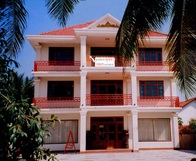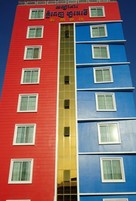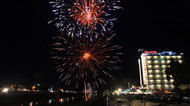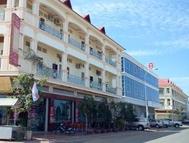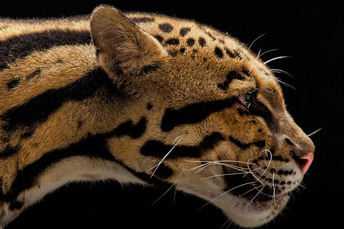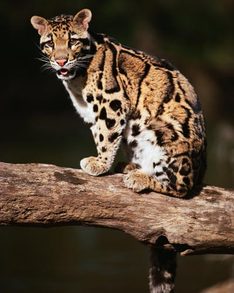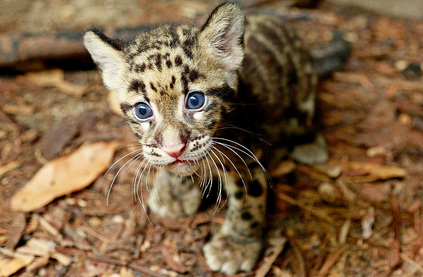CAMBODIA
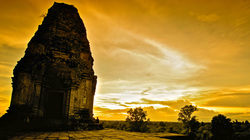
Visa on Arrival can be obtained at the Visa Counter upon arrival at Cambodia International Airports in Phnom Penh and Siem Reap. Note that not all foreign passport holders can apply for a visa on arrival.
Entry Visa requirements (2013)
1. Passport valid for at least four (4) months from the expiry date
2. One recent photograph (4 x 6)
3. Visa fee payment: Tourist Visa: USD 20.00
4. Visitors will be fined USD 5.00 per day for overstay.
5. Entry into the Kingdom may be refused to visitors without sufficient funds for their stay and/or a return ticket.
Entry Visa requirements (2013)
1. Passport valid for at least four (4) months from the expiry date
2. One recent photograph (4 x 6)
3. Visa fee payment: Tourist Visa: USD 20.00
4. Visitors will be fined USD 5.00 per day for overstay.
5. Entry into the Kingdom may be refused to visitors without sufficient funds for their stay and/or a return ticket.
Allein das Ankor Wat, die unglaublich vielen religiösen und geschichtlichen Gebäude, die Landschaft, die Küste und vor allem die Menschen, die in Kambodscha leben, sind sehenswert. Doch so klein das Land auch sein mag, versteckte Schätze zum Bestaunen und Städte sowie Dörfer, die es sich lohnen zu besuchen, hat es allemal zu bieten.
Phnom Penh
Die Hauptstadt Kambodschas existiert bereit sei 1372, nachdem eine Khmerfrau mehrere Buddhastatuen am Ufer des Mekong gefunden und daraufhin ein Kloster hat bauen lassen. Viel Natur hat sich diese Stadt bewahrt und erzählt an jedem Gebäude die kulturelle Geschichte des Landes. Hinterlassenschaften der französischen Kolonialzeiten und prunkvoll geschmückte Häuserwände, lassen einen alles vergessen. In Phnom Penh muss man sich auf jeden Fall den Palast des Königs anschauen, sowie die Silberpagode. Ebenfalls interessant für Geschichte und Kultur ist das Nationalmuseum, das Toul Sleng Museum sowie den Wat Phnom – einem künstlichen Hügel als Namensgeber der Stadt.
Sehr interessant und auch auf keinen Fall zu verpassen ist die Angkor Night Show. In der Zeit von November bis April werden die Stadt und vor allem der Tempel, der als Hintergrund der Aufführung dient, beeindruckend dargestellt. Wer es ein wenig romantisch möchte, kann sich unter freiem Himmel ein Abendessen servieren lassen. Auf einer Tempelterrasse ist das ein besonderes Erlebnis und die dazugehörige Aufführung unterstreicht dieses Flair erst richtig.
Travellers to Cambodia should take precautions as they would elsewhere in Asia. The best clinics and hospitals are located in Phnom Penh and Siem Reap, however more serious medical treatments will require transferring to Bangkok.
Outside the major centres, medical care facilities are basic, though a private clinic is preferable to a government hospital. Some of the diseases known to exist in Cambodia include hepatitis A and B, typhoid, tuberculosis, dengue fever, malaria, Japanese encephalitis, diphtheria, tetanus, polio, rabies and HIV/AIDS.
REISEZEIT
Die ideale Reisezeit ist vom Dezember bis Februar. Es ist die kühlste und zugleich trockenste Jahreszeit. Die Monsumzeit von Mai bis Oktober ist für eine Rundreise durch Kambodscha am wenigsten geeignet. Die unerträglich Schwüle und die Überschwemmungen von Straßen machen das Reisen sehr schwierig. In den Übergangszeiten (März, April und November) sind viele Traveller unterwegs. Viel besser ist aber die anschließenden drei trockenen Monate.
Phnom Penh
Die Hauptstadt Kambodschas existiert bereit sei 1372, nachdem eine Khmerfrau mehrere Buddhastatuen am Ufer des Mekong gefunden und daraufhin ein Kloster hat bauen lassen. Viel Natur hat sich diese Stadt bewahrt und erzählt an jedem Gebäude die kulturelle Geschichte des Landes. Hinterlassenschaften der französischen Kolonialzeiten und prunkvoll geschmückte Häuserwände, lassen einen alles vergessen. In Phnom Penh muss man sich auf jeden Fall den Palast des Königs anschauen, sowie die Silberpagode. Ebenfalls interessant für Geschichte und Kultur ist das Nationalmuseum, das Toul Sleng Museum sowie den Wat Phnom – einem künstlichen Hügel als Namensgeber der Stadt.
Sehr interessant und auch auf keinen Fall zu verpassen ist die Angkor Night Show. In der Zeit von November bis April werden die Stadt und vor allem der Tempel, der als Hintergrund der Aufführung dient, beeindruckend dargestellt. Wer es ein wenig romantisch möchte, kann sich unter freiem Himmel ein Abendessen servieren lassen. Auf einer Tempelterrasse ist das ein besonderes Erlebnis und die dazugehörige Aufführung unterstreicht dieses Flair erst richtig.
Travellers to Cambodia should take precautions as they would elsewhere in Asia. The best clinics and hospitals are located in Phnom Penh and Siem Reap, however more serious medical treatments will require transferring to Bangkok.
Outside the major centres, medical care facilities are basic, though a private clinic is preferable to a government hospital. Some of the diseases known to exist in Cambodia include hepatitis A and B, typhoid, tuberculosis, dengue fever, malaria, Japanese encephalitis, diphtheria, tetanus, polio, rabies and HIV/AIDS.
REISEZEIT
Die ideale Reisezeit ist vom Dezember bis Februar. Es ist die kühlste und zugleich trockenste Jahreszeit. Die Monsumzeit von Mai bis Oktober ist für eine Rundreise durch Kambodscha am wenigsten geeignet. Die unerträglich Schwüle und die Überschwemmungen von Straßen machen das Reisen sehr schwierig. In den Übergangszeiten (März, April und November) sind viele Traveller unterwegs. Viel besser ist aber die anschließenden drei trockenen Monate.
CLOUDED LEOPARD - Neofelis nebulosa / Nebelparder
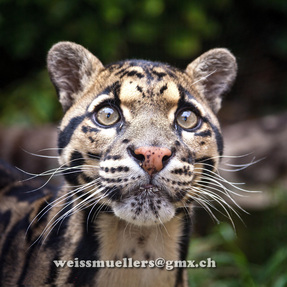
The clouded leopard is a felid found from the Himalayan foothills through mainland Southeast Asia into China, and has been classified as vulnerable in 2008 by IUCN.Its total population size is suspected to be fewer than 10,000 mature individuals, with a decreasing population trend and no single population numbering more than 1,000 adults.
The clouded leopard is named after the distinctive 'clouds' on its coat - ellipses partially edged in black, with the insides a darker colour than the background colour of the pelt. The base of the fur is a pale yellow to rich brown, making the darker cloud-like markings look even more distinctive. The limbs and underbelly are marked with large black ovals, and the back of its neck is conspicuously marked with two thick black bars. The clouded leopard is a medium-sized cat, 60 to 110 cm long and weighing between 11 and 20kg.
It does, however, have an exceptionally long tail for balancing, which can be as long as the body itself, thick with black ring markings. The clouded leopard has a stocky build and, proportionately, the longest canine teeth of any living feline. Well adapted to forest life, the clouded leopard also has relatively short legs and broad paws which make it excellent at climbing trees and creeping through thick forest. It can climb while hanging upside-down under branches and descend tree trunks head-first.
CLICK ON THE IMAGE FOR THE VIDEO
clouded leopard - reintroduced into the wild
The clouded leopard is named after the distinctive 'clouds' on its coat - ellipses partially edged in black, with the insides a darker colour than the background colour of the pelt. The base of the fur is a pale yellow to rich brown, making the darker cloud-like markings look even more distinctive. The limbs and underbelly are marked with large black ovals, and the back of its neck is conspicuously marked with two thick black bars. The clouded leopard is a medium-sized cat, 60 to 110 cm long and weighing between 11 and 20kg.
It does, however, have an exceptionally long tail for balancing, which can be as long as the body itself, thick with black ring markings. The clouded leopard has a stocky build and, proportionately, the longest canine teeth of any living feline. Well adapted to forest life, the clouded leopard also has relatively short legs and broad paws which make it excellent at climbing trees and creeping through thick forest. It can climb while hanging upside-down under branches and descend tree trunks head-first.
CLICK ON THE IMAGE FOR THE VIDEO
clouded leopard - reintroduced into the wild
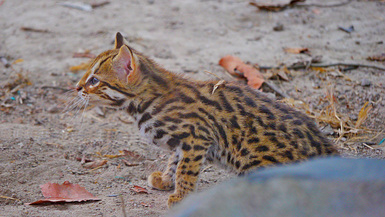
Asian Leopard Cat - NO PET
Though many people call them “Asian Leopard Cats” (ALC), technically, the exact species name is “Leopard Cat” prionailurus bengalensis. These little spotted felines come in many subspecies that range from 3 to 20 pounds in size. Being tiny animals living at the bottom of the food chain, they are very shy, nocturnal and afraid of humans who have been hunting them for centuries.
Distribution and habitat
Leopard cats have different subspecies that are indigenous to a large part of southern Asia. They can be found in agriculturally used areas, deep jungles and forested habitats from southern India eastward through Bangladesh, Burma, Thailand, Malaysia, China, Korea and into Russia’s Far East. ALCs can also be found on southern islands such as Sumatra, Borneo, Bali, Java, Taiwan, the Philippines and the Sunda islands of Indonesia.
Hunting and diet
They are known to eat mostly small birds, rodents, reptiles, fish and insects in the wild. Some of them occasionally venture into farmyards to prey on domestic chickens. When ALCs attack and kill their victims, they go straight in for the kill rather than playing with their prey as if they were toys. Hunting takes place at night and their climbing skills allow them to spend the days resting in tree hollows or caves.
Characteristics and morphology
The general build of an Asian Leopard Cat is somewhat similar to a house cat, but their torso is long and substantial and their legs and body are much longer (25 to 32 inches from head to tail) than normal domestic cats. Hind legs are slightly longer than the forelegs. The tail is thick and medium in length (11 to 14 inches) with rounded tip. Paws are large with prominent knuckles.
Colors and markings
Though many people call them “Asian Leopard Cats” (ALC), technically, the exact species name is “Leopard Cat” prionailurus bengalensis. These little spotted felines come in many subspecies that range from 3 to 20 pounds in size. Being tiny animals living at the bottom of the food chain, they are very shy, nocturnal and afraid of humans who have been hunting them for centuries.
Distribution and habitat
Leopard cats have different subspecies that are indigenous to a large part of southern Asia. They can be found in agriculturally used areas, deep jungles and forested habitats from southern India eastward through Bangladesh, Burma, Thailand, Malaysia, China, Korea and into Russia’s Far East. ALCs can also be found on southern islands such as Sumatra, Borneo, Bali, Java, Taiwan, the Philippines and the Sunda islands of Indonesia.
Hunting and diet
They are known to eat mostly small birds, rodents, reptiles, fish and insects in the wild. Some of them occasionally venture into farmyards to prey on domestic chickens. When ALCs attack and kill their victims, they go straight in for the kill rather than playing with their prey as if they were toys. Hunting takes place at night and their climbing skills allow them to spend the days resting in tree hollows or caves.
Characteristics and morphology
The general build of an Asian Leopard Cat is somewhat similar to a house cat, but their torso is long and substantial and their legs and body are much longer (25 to 32 inches from head to tail) than normal domestic cats. Hind legs are slightly longer than the forelegs. The tail is thick and medium in length (11 to 14 inches) with rounded tip. Paws are large with prominent knuckles.
Colors and markings
- Head: Four vertical black stripes run from the forehead or inner eye corners to the back of the neck, breaking up into short irregular rows of dark markings and elongated spots on the neck and shoulders, although sometimes one stripe runs the length of the entire body. Two narrow black cheek stripes run from the outer eye corners, enclosing a white area on the cheek. The back of their ears are black with the exception of a white triangular shaped spot.
- Coat: It’s primarily the spotted coat that suggests “leopard”. ALCs exhibit well-defined dark spots spread all over their body that can be solid or rosetted and sometimes marbled. The base coat varies in color depending on the cat’s geological areas of origin, and ranges from different shades of tan (beige to golden), gray or tawny brown. The chin, throat, belly, and interior parts of the legs are white with black spots.
- Pads: The color of their toe pads varies from dark purple to dark brown. The carpal pads, found on the forelegs, are very light pink.
- Tail: All asian leopard cats have a spotted or ringed tail whose tip is black.
Temple City
.
Wildlife / Landscape / People
Cambodia is home to a diverse array of wildlife. There are 212 mammal species, 536 bird species, 240 reptile species, 850 freshwater fish species (Tonlé Sap Lake area), and 435 marine fish species.
Many of the country's species are recognized by the IUCN or World Conservation Union as threatened, endangered, or critically endangered due to deforestation and habitat destruction, poaching, the illegal wildlife trade, and farming, fishing, and forestry concessions. Intensive poaching may have already driven Cambodia's national animal, the Kouprey, to extinction, and wild tigers, Eld's deer, wild water buffaloes and hog deer are at critically low numbers.
Wildlife in Cambodia includes dholes, elephants, deer (sambar, Eld's deer, hog deer and muntjac), wild oxen (banteng and gaur), panthers, bears, and tigers. Cormorants, cranes, ibises, parrots, green peafowl, pheasants, and wild ducks are also found, and poisonous snakes are numerous.Deforestation, mining activities, and unregulated hunting, have diminished the country’s wildlife diversity rapidly.
Cambodia also has many endangered species. Cambodia has 16 globally endangered species and two critically endangered species. Some of Cambodia's endangered species are the Asian elephant, Siamese crocodile, wild water buffalo, and the Germain's silver langur.
Tierfreunde haben an einem Urlaub in Kambodscha ihre Freude, denn die dortige Fauna gestaltet sich ausgesprochen vielfältig. In den dichten Wäldern und Nationalparks tummeln sich zahlreiche exotische Tiere, die selbst in Zoos nur sehr selten zu sehen sind. Dabei sind viele der in Kambodscha lebenden Tierarten vermutlich noch nicht einmal entdeckt.
In den letzten Jahrzehnten wurden immer wieder neue und bislang unbekannte Tierarten gesichtet. Diesbezüglich handelt es sich nicht nur um kleinere Amphibien und Insekten, sondern insbesondere auch um größere Säugetiere. Zu den noch jüngeren Entdeckungen zählt beispielsweise ein Rind, das so genannte Kouprey, das allerdings seit den 80er Jahren niemand mehr zu Gesicht bekam, außerdem fand man Affen und Schleichkatzen, die man in den Wäldern Kambodschas nicht vermutete.
Viele in Kambodscha heimischen Tiere sind extrem selten, so dass es eher unwahrscheinlich ist, einem Tiger, einem Leoparden, einem Blakc Gibbon oder WIldwasser Büffel in freier Wildbahn zu begegnen. Dennoch gibt es am Boden, auf den Bäumen und in der Luft viel zu gucken. Überall sirrt, krabbelt und kriecht es. Schildkröten, Krokodile, Schlangen und viele weitere Reptilien, Hirschartige und Hirsche sowie Flughunde und exotische Vögeln bevölkern die einzigartige kambodschanische Landschaft.
Identification. The name "Cambodia" derives from the French Cambodge, which comes from the Khmer word Kâmpuchea, meaning "born of Kambu." During the socialist regimes of Democratic Kampuchea (DK) (1975–1979) and the People's Republic of Kampuchea (PRK) (1979–1989), the country was known internationally as Kampuchea, but more recent governments have returned to using Cambodia, and the official name in English is now the Kingdom of Cambodia.
Khmer as a noun or adjective can refer to the Cambodian language, people, or culture and thus suggests an ethnic and linguistic identity more than a political entity. From 1970 to 1975, the country was known as the Khmer Republic (KR).
Location and Geography. Cambodia lies between Thailand and Vietnam in mainland southeast Asia, with a smaller stretch of the northern border adjoining Laos. The most central region culturally and economically is the lowland flood plain of the Mekong River and Tonle Sap Lake. The Sap River meets the Mekong at Phnom Penh, where the river soon divides again into the Bassac and the Mekong, which flow through southern Vietnam to the South China Sea. Although Cambodia also has a coastline on the Gulf of Thailand, the coast is separated from the central flood plain by mountains; only since the 1950s have railroads and roads provided ready access to the coastal port towns.
The economy is dominated by wet rice agriculture. The iconic image of the countryside is one of rice paddies among which are scattered sugar palms. Until recently, much of the area outside the flood plains was forested.
The ancient capital of the Khmer Empire was at Angkor, close to present-day Siem Reap. In the fifteenth century, the capital was moved to the area of the intersection of the Sap and Mekong rivers, near present-day Phnom Penh, perhaps to enhance trade. The most densely populated areas now are along the rivers in the provinces near Phnom Penh.
Many of the country's species are recognized by the IUCN or World Conservation Union as threatened, endangered, or critically endangered due to deforestation and habitat destruction, poaching, the illegal wildlife trade, and farming, fishing, and forestry concessions. Intensive poaching may have already driven Cambodia's national animal, the Kouprey, to extinction, and wild tigers, Eld's deer, wild water buffaloes and hog deer are at critically low numbers.
Wildlife in Cambodia includes dholes, elephants, deer (sambar, Eld's deer, hog deer and muntjac), wild oxen (banteng and gaur), panthers, bears, and tigers. Cormorants, cranes, ibises, parrots, green peafowl, pheasants, and wild ducks are also found, and poisonous snakes are numerous.Deforestation, mining activities, and unregulated hunting, have diminished the country’s wildlife diversity rapidly.
Cambodia also has many endangered species. Cambodia has 16 globally endangered species and two critically endangered species. Some of Cambodia's endangered species are the Asian elephant, Siamese crocodile, wild water buffalo, and the Germain's silver langur.
Tierfreunde haben an einem Urlaub in Kambodscha ihre Freude, denn die dortige Fauna gestaltet sich ausgesprochen vielfältig. In den dichten Wäldern und Nationalparks tummeln sich zahlreiche exotische Tiere, die selbst in Zoos nur sehr selten zu sehen sind. Dabei sind viele der in Kambodscha lebenden Tierarten vermutlich noch nicht einmal entdeckt.
In den letzten Jahrzehnten wurden immer wieder neue und bislang unbekannte Tierarten gesichtet. Diesbezüglich handelt es sich nicht nur um kleinere Amphibien und Insekten, sondern insbesondere auch um größere Säugetiere. Zu den noch jüngeren Entdeckungen zählt beispielsweise ein Rind, das so genannte Kouprey, das allerdings seit den 80er Jahren niemand mehr zu Gesicht bekam, außerdem fand man Affen und Schleichkatzen, die man in den Wäldern Kambodschas nicht vermutete.
Viele in Kambodscha heimischen Tiere sind extrem selten, so dass es eher unwahrscheinlich ist, einem Tiger, einem Leoparden, einem Blakc Gibbon oder WIldwasser Büffel in freier Wildbahn zu begegnen. Dennoch gibt es am Boden, auf den Bäumen und in der Luft viel zu gucken. Überall sirrt, krabbelt und kriecht es. Schildkröten, Krokodile, Schlangen und viele weitere Reptilien, Hirschartige und Hirsche sowie Flughunde und exotische Vögeln bevölkern die einzigartige kambodschanische Landschaft.
Identification. The name "Cambodia" derives from the French Cambodge, which comes from the Khmer word Kâmpuchea, meaning "born of Kambu." During the socialist regimes of Democratic Kampuchea (DK) (1975–1979) and the People's Republic of Kampuchea (PRK) (1979–1989), the country was known internationally as Kampuchea, but more recent governments have returned to using Cambodia, and the official name in English is now the Kingdom of Cambodia.
Khmer as a noun or adjective can refer to the Cambodian language, people, or culture and thus suggests an ethnic and linguistic identity more than a political entity. From 1970 to 1975, the country was known as the Khmer Republic (KR).
Location and Geography. Cambodia lies between Thailand and Vietnam in mainland southeast Asia, with a smaller stretch of the northern border adjoining Laos. The most central region culturally and economically is the lowland flood plain of the Mekong River and Tonle Sap Lake. The Sap River meets the Mekong at Phnom Penh, where the river soon divides again into the Bassac and the Mekong, which flow through southern Vietnam to the South China Sea. Although Cambodia also has a coastline on the Gulf of Thailand, the coast is separated from the central flood plain by mountains; only since the 1950s have railroads and roads provided ready access to the coastal port towns.
The economy is dominated by wet rice agriculture. The iconic image of the countryside is one of rice paddies among which are scattered sugar palms. Until recently, much of the area outside the flood plains was forested.
The ancient capital of the Khmer Empire was at Angkor, close to present-day Siem Reap. In the fifteenth century, the capital was moved to the area of the intersection of the Sap and Mekong rivers, near present-day Phnom Penh, perhaps to enhance trade. The most densely populated areas now are along the rivers in the provinces near Phnom Penh.
MONDULKIRI
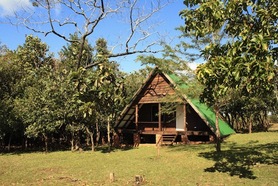
There are no Angkor era ruins in Mondulkiri nor is its capital city Sen Monoram any bigger than a large village. However, there are thundering waterfalls, one of the largest protected areas in Cambodia for wildlife including tigers, leopards, bears and rare birds, and a chance to be go elephant trekking, learn to be a mahout and come up close and personal to elephants in the Elephant Valley Project.
Nature Lodge is located on a hilltop just outside the town of Sen Monorom in Mondulkiri Province in the northeastern highlands of Cambodia. The lodge can be easily reached by moto and is only 2 km from the bus station. If you need assistance with getting to the lodge just call. Nature Lodge is an original eco-tourism bungalow park, based on creativity, fair trade, wildlife and landscape conservation as well as community care awareness.
CLICK ON THE IMAGE FOR THE LINK
Nature Lodge is located on a hilltop just outside the town of Sen Monorom in Mondulkiri Province in the northeastern highlands of Cambodia. The lodge can be easily reached by moto and is only 2 km from the bus station. If you need assistance with getting to the lodge just call. Nature Lodge is an original eco-tourism bungalow park, based on creativity, fair trade, wildlife and landscape conservation as well as community care awareness.
CLICK ON THE IMAGE FOR THE LINK
